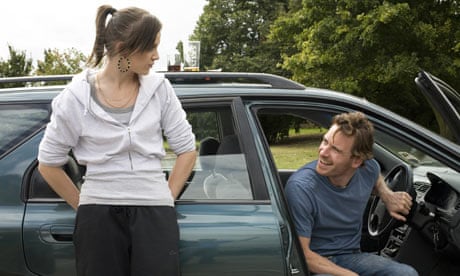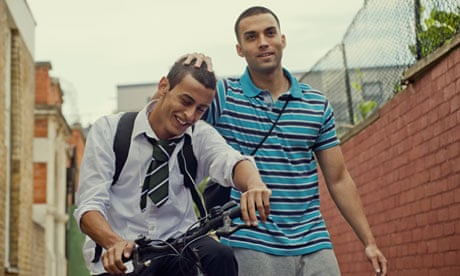Fish Tank (Andrea Arnold), My
Brother The Devil (Sally El Housaini) and The Selfish Giant (Clio Barnard)
All three directors use the living standards of families living in
poverty and with crime in working class areas around the UK to show the
audience what it is like to continuously live that kind of lifestyle. The
directors do this in several various ways. For example, in Fish Tank and The
Selfish Giant, the protagonist doesn't overcome the poverty and crime they were
living with, however, in My Brother the Devil, the protagonist overcomes the
life of crime and gets out of the ongoing circle of it that many others are
still apart of.
 In the three films, the protagonists all differ from one another. They
are used to represent how people deal with poverty and crime that occurs on
their doorstep everyday. Anyone can be apart of crime or poverty, no matter
what race, sex or age they are. In Fish Tank, Andrea Arnold uses a female
protagonist which is a common feature in her movies. She does this to show
the audience the different problems that females go through when living with
crime. Mia, the protagonist, has to deal with different problems than that of
those in the selfish giant and my brother the devil, for example the statutory
rape of Connor and the verbal disputes with her mother. Arnold wants to get the
point across that women can live in poverty and with crime and can deal with it
just as much as men can. The use of a female protagonist can be used to
shed light on, financial struggles and gender struggles. Mia can be seen as
almost breaking the stereotype of a woman. Surrounded by dancing girls trying
to impress boys, and boys only looking for one thing, she is not only a symbol
of escaping from the estate she lives in and the social class she is set in.
Arnold gave the character of Mia, certain traits that set her apart from other
girls. One clear example of this, is her violence, she hesitate to use
violence.
In the three films, the protagonists all differ from one another. They
are used to represent how people deal with poverty and crime that occurs on
their doorstep everyday. Anyone can be apart of crime or poverty, no matter
what race, sex or age they are. In Fish Tank, Andrea Arnold uses a female
protagonist which is a common feature in her movies. She does this to show
the audience the different problems that females go through when living with
crime. Mia, the protagonist, has to deal with different problems than that of
those in the selfish giant and my brother the devil, for example the statutory
rape of Connor and the verbal disputes with her mother. Arnold wants to get the
point across that women can live in poverty and with crime and can deal with it
just as much as men can. The use of a female protagonist can be used to
shed light on, financial struggles and gender struggles. Mia can be seen as
almost breaking the stereotype of a woman. Surrounded by dancing girls trying
to impress boys, and boys only looking for one thing, she is not only a symbol
of escaping from the estate she lives in and the social class she is set in.
Arnold gave the character of Mia, certain traits that set her apart from other
girls. One clear example of this, is her violence, she hesitate to use
violence. In My Brother the Devil, the protagonist is of Egyptian descent. Sally
El Housaini is flipping the script to show that it is possible for anyone
to be apart of crime and poverty. As the familay is Egyptian, religion is a very
important factor in the movie. Even though morale is low because of the
situation they are in, the family look to their religion to give them hope and
belief of a better life coming their way. Mo, the protagonist, is the baby
brother in the family. His older brother and parents are trying to keep him
away from dealing drugs and going down the path of his older brother, but this
doesn’t work and he ends up dealing drugs anyway. Housaini is highlighting how
hard it is to keep away from crime as it is in their lifestyle.
In My Brother the Devil, the protagonist is of Egyptian descent. Sally
El Housaini is flipping the script to show that it is possible for anyone
to be apart of crime and poverty. As the familay is Egyptian, religion is a very
important factor in the movie. Even though morale is low because of the
situation they are in, the family look to their religion to give them hope and
belief of a better life coming their way. Mo, the protagonist, is the baby
brother in the family. His older brother and parents are trying to keep him
away from dealing drugs and going down the path of his older brother, but this
doesn’t work and he ends up dealing drugs anyway. Housaini is highlighting how
hard it is to keep away from crime as it is in their lifestyle.
No comments:
Post a Comment